2006
![]()
2007
![]()
2008
![]()
2009
![]()
2010
![]()
2011
![]()
2012
![]()
2015
![]()
2016
![]()
2017
![]()
2018
![]()
2019
![]()
2020
![]()
![]()
2022/23/24
Excavations at the Ala-Tey 1 and Terezin cemeteries in Tuva in 2019
In 2019 the Tuvan Archaeological
Expedition of the Institute of the History of Material Culture, Russian Academy
of Sciences, St. Petersburg continued the excavations at the Xiongnu period cemeteries of Ala-Tey 1 and Terezin (II-I cc BC), situated only 4.5 km
apart from each other.

Fig.1 Excavation at the Ala-Tey 1 cemetery in
2019
The excavation at the Ala-Tey Cemetery started this
year on 25th of May and ended on 23th of June, during the short period when the
meltwater had already drained away and the Sayano-Shushenskoe Reservoir had still not filled up again.
The excavations of Ala-Tey have taken place in
very unusual conditions – since the 1980s, the site has lain at the bottom of
the reservoir. We can only work here for about 4-5 weeks each year, in May and
June. For the rest of year, the cemetery is at a depth of about 15 m under
water and the Ala-Tey mount is merely a small island.
During the 2019 excavation’s campaign, 19
intact burials were discovered on the excavation area of 935 m². To date 112 burials have been uncovered in
the Ala-Tey 1 cemetery. Some grave-pits were found
and conserved for the next year’s excavations.
The new discovered graves were located at
a depth of about 0,5 – 1 meters. In most cases it was
possible to determine the contours of the grave pits.
In 19 excavated burials 289 artefacts were
found (from 180 objects). All the Ala-Tey 1 finds are
currently in IHMC RAS (St. Petersburg) for scientific research and required
restoration.

Fig.2 Mount Ala-Tey and the excavation’s area in 2019, before flooding.

Fig.3 Mount Ala-Tey after
flooding, July 2019
All graves excavated 2019 belong to
the Xiongnu period and date to the 2nd-1st centuries
BC. Both male and female burials were found in stone cists, wooden coffins
with stone siding or simple earthen pits. All burials discovered in this year
were single, All buried males and females except for
only one young woman were found in a supine position with extended legs.

Fig.4 Ala-Tey. Not yet opened stone cists
One female burial (AT1/112) was found with
the body on the left side with flexed legs. This one is very similar to the grave
AT1/86 from 2017 - rare burial rite for this cemetery and grave goods such
pottery and large belt buckle/plaque made of engraved Siberian jet for example.

Fig.5 Excavation of the female burial
AT1/112
One male burial contained a pair of
figured belt buckles, some bone elements of a composite bow and a horse skull

Fig.6 Ala-Tey, male
burial with a horses skull and bronze belt buckles

Fig.7 Ala-Tey, male burial with bronze belt buckles
The important element in the female burial
arrangement was the belt with a large openwork buckle made of bronze (or
sometimes of Siberian jet or bone) with geometric or animal style
ornamentation. To date, more than 25 large bronze belt buckles have been found
at Ala-Tey and Terezin. Some
pieces are well known from other Xiongnu cemeteries
in Transbaikalia or Mongolia, some pieces are unique. The most common type of
such buckles at Ala-Tey and Terezin is the one with depiction of two yaks. We have already 10 pieces from both
cemeteries. Usually they are single in a grave, but in 2019, first time for our
excavations, we found a pair of these buckles in the female burial AT1/101.

Fig.8 Ala-Tey,
female burial with a pair of large bronze belt buckle with two yaks

As usual many ceramic vessels have been
found: typically Xiongnu jar-shaped pots with
vertical polishing, shallow vessels and some small vessels with an internal
partition. All of these small vessels with partition were discovered on the
level of the ancient surface, in the centre or at the edge of the grave pit.

Fig.10 Some Xiongnu ceramic vessels from the cemetery of Ala-Tey 1

Fig.11 Some Xiongnu ceramic vessels from the cemetery of Ala-Tey 1
The cemetery of Terezin is located only 4,5 km from Ala-Tey,
on the sandy shore of the reservoir, which is very eroded. Evidence of the
destroyed burials and objects from them has been found along about 1.5 km
stretch of shore. In 2019 we have only short period for the working at Terezin.
The excavation’s area in 2019 was 185 m².

Fig.12 Excavation at the cemetery of Terezin in
2019
Two Xiongnu period burials have been uncovered this year in the Terezin cemetery – one destroyed about 20 years ago by the reservoir (T/32) and one
undisturbed (T/33). The undisturbed one contain the male skeleton with some of
grave goods such a bone parts of the bow, bone arrowheads, ceramic vessels
etc. One of the arrowheads has engraved
H-shaped symbol, known us from one ceramic vessel at Ala-Tey and two large belt plaques made of jet, both from Terezin and Ala-Tey.

Fig.13 Terezin,
excavations of burial T/33

Fig.14 Terezin, burial T/33

Fig.15 Terezin, pottery from the burial
T/33
Under the stone slabs of the destroyed
burial T/32 one fragment of the original Chinese bronze mirror was found. It
can be dated to Western Han period, 2-1 cc BC.

Fig.16 Terezin, fragment of the
Chinese bronze mirror from the burial T/32
To date 112 burials have been excavated in
the Ala-Tey 1 cemetery, along with 33 at Terezin. The
excavation of the cemeteries will be continued in the 2020 field season. The
exact number of burials is still unknown, but surely it will be much more.
Pavel
Leus (Berlin/St.Petersburg), 18.02.2020
Some published papers about our
excavations at Ala-Tey and Terezin can be found at:
https://independent.academia.edu/PavelLeus
Follow me @pavel_fahrner for
our excavation’s news, pictures and videos from my expeditions in Tuva and
Siberia.
Archaeological campaign in Tuva, Russian Federation, 2020
Pavel Leus (St. Petersburg/Berlin)
In 2020, the Tuvan Archaeological Expedition of the Institute of the History of Material Culture (St. Petersburg, Russia) continued with its excavations at the Xiongnu period cemetery of Terezin at the edges of the Sayan-Shushenskoe reservoir in Tuva.
Continuing the excavations at the cemetery of Ala-Tey was not possible due to the Covid-19 situation in Tuva. As the expedition arrived at this site after the reservoir filled up, it was too late. Since the Ala-Tey cemetery is located at the bottom of the reservoir, field work can only take place about 4 weeks a year from May to June. The rest of the year, the cemetery is submerged under around 17 meters of water.
The Terezin cemetery is located at a higher elevation on the sandy and greatly eroded shore of the reservoir. The destroyed burials and their objects were discovered along the 1.5 km stretch of shoreline. In recent years, our expedition has managed to determine the structure of the cemetery and also found a large number of intact and undisturbed burials from the Xiongnu period.This year, the excavation at the Terezin Xiongnu Cemetery started on 28 June and ended on 18 July. A surface of 200 m2 was excavated over the four excavation areas at a depth from 0.5 to 4 meters.
During this time, only a single undisturbed child’s grave was discovered. A few chance finds were found from the destroyed burials on the beach of the reservoir, e.g. bronze artefacts of the Xiongnu period, a bell and a spoon shaped strap-end.
The finds from our multi-year excavations of the Terezin and Ala-Tey cemeteries (burial rite, grave goods like bronze openwork belt plates, pottery, Chinese mirrors and coins, etc) allow for a more precise formulation of the identification signs of the Ulug-Khem archaeological culture of the Xiongnu period in Central Tuva.
No correlation was found between particular types of grave structure in either cemetery or gender. The burials were single, although occasionally paired.
Both male and female burials were in stone cists, wooden coffins with stone siding and in simple earthen pits. The depth of the graves also varied from about 30 cm to 2 m. Male, female and child burials were found with the body on the left or right side or supine with flexed or extended legs.
The majority of the grave goods from female burials have no analogues in the male burials, with the exception of some common artefacts such as ceramic vessels, iron knives, etc.
An important element of the female burial array were the large open-work buckle or belt plaques made of bronze with zoomorphic and geometric ornamentation or sometimes jet belt plaques decorated with engravings or inlays of carnelian, turquoise and mother of pearl. Engraved bone buckles were also found. The belts were decorated with small bronze open-work appliqués, bronze rings, bronze imitations of cowrie shells, Chinese Wu-Zhu coins, etc.
Chinese bronze mirrors were found exclusively in the female graves. The majority of the mirrors date to the Western Han period (202 BCE-9 CE). Most of these are not original Chinese mirrors but rather local copies. Five mirrors are dated to the end of the Warring States period (475-221 BCE) in the pre-Han period in China, which in Tuva corresponds to the late Scythian period.
Surprisingly, there were virtually no weapons in the male burials. Only few burials contained bone parts for the composite bows and bone arrowheads.
The basic types of ceramic vessels are single shallow vessels or those paired with jar-shaped vessels. They were found in all the burials: male, female and child.
In the Ala-Tey, a unique type of ceramic vessel was found. There were small vessels with an internal partition, at the base of which was usually a round hole. All of the vessels were discovered at the level of the ancient surface in the centre or at the edge of the grave pit. It is possible that these were lamps which were lighted over the grave or around its periphery during the funeral ceremony or afterwards.
We still cannot say for certain who was buried at Ala-Tey and Terezin. The graves included nomads who were part of the multi-ethnic Xiongnu confederation and who had entered Tuva during their expansion to the north. Until then, they might have lived somewhere on the northern borders of China, where they could obtain Chinese wares such as mirrors, coins, ornaments, etc. These nomads headed into Tuva around the start of the Western Han period, late 3rd century BCE to early 2nd century BCE.
When the excavation at Terezin was completed, our expedition went to the Kara-Turug Mountain to the south of Tuva. Two very interesting kurgans were discovered. They were both from around the Xiongnu period, but revealed a totally different burial rite and construction than at Terezin and Ala-Tey. In Tuva, it is very unusual to find very carefully assembled stone plate’s constructions under a small kurgan, with 2-3 skeletons buried with flexed legs. The stone slabs, which have a roughly round or oval shape, form a kind of highly primitive "dome grave" with a false arch. Both graves were partially looted. A few ceramic vessels, cowrie shells, one earring, and arrow heads were found. The burials can be dated to about the 2nd century BCE. Pottery and other objects are known from the much later Scythian graves, as well as Ulug-Khem culture. But no pure Xiongnu finds were discovered. In one grave, however, many compactly lying caprid skulls were uncovered, as in classical Xiongnu burials.
For the most part, this region in the south of Tuva still has not been archaeologically explored.
A few very similar objects are known from the area near the reservoir, excavated in the 1970ts but not published. We will research these graves in more details in the future. In the upcoming campaign in late May-June 2021, excavations at Ala-Tey and Terezin are planned, provided the pandemic does not get in the way.
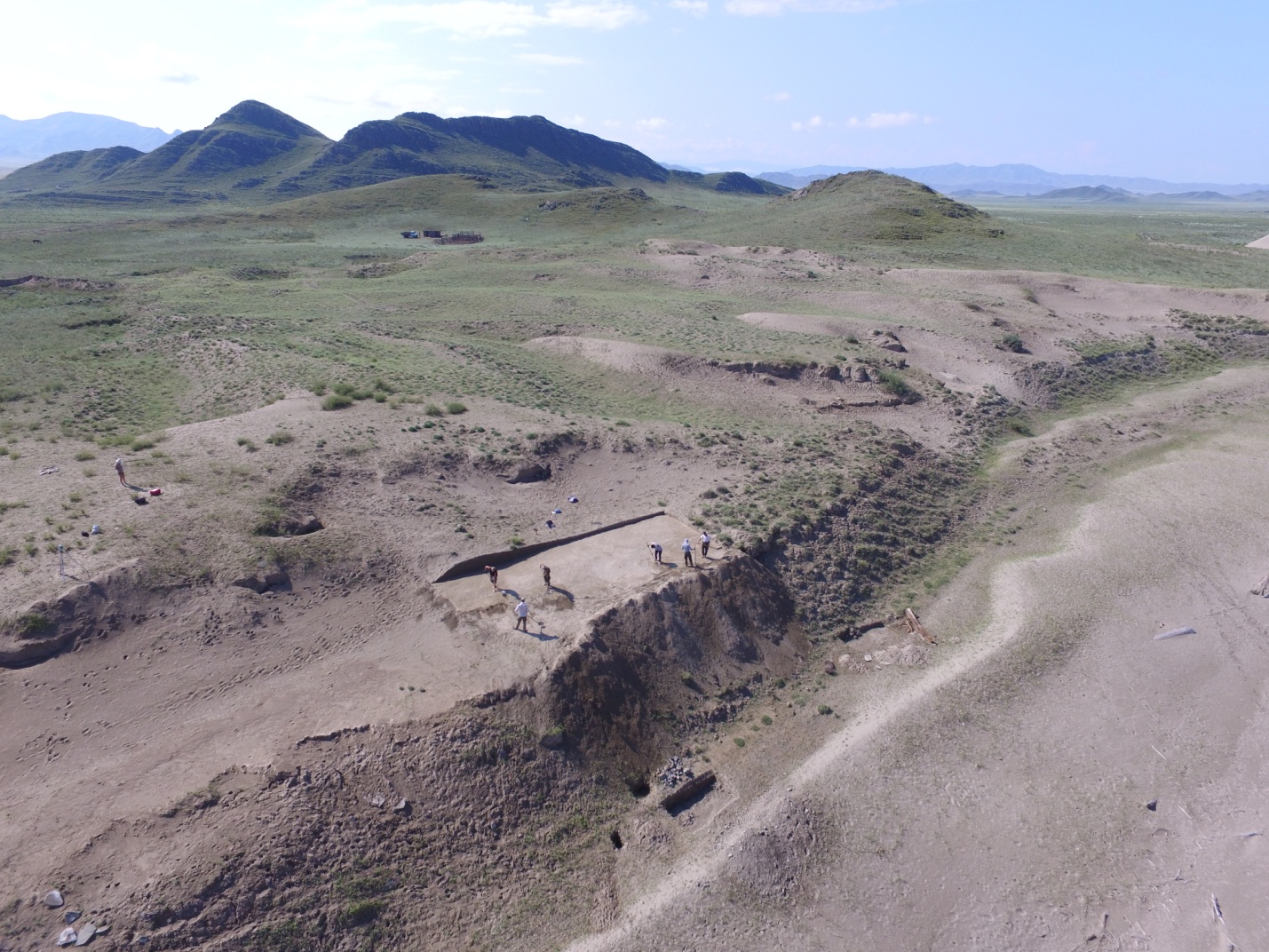
Fig.1
Excavations at Terezin
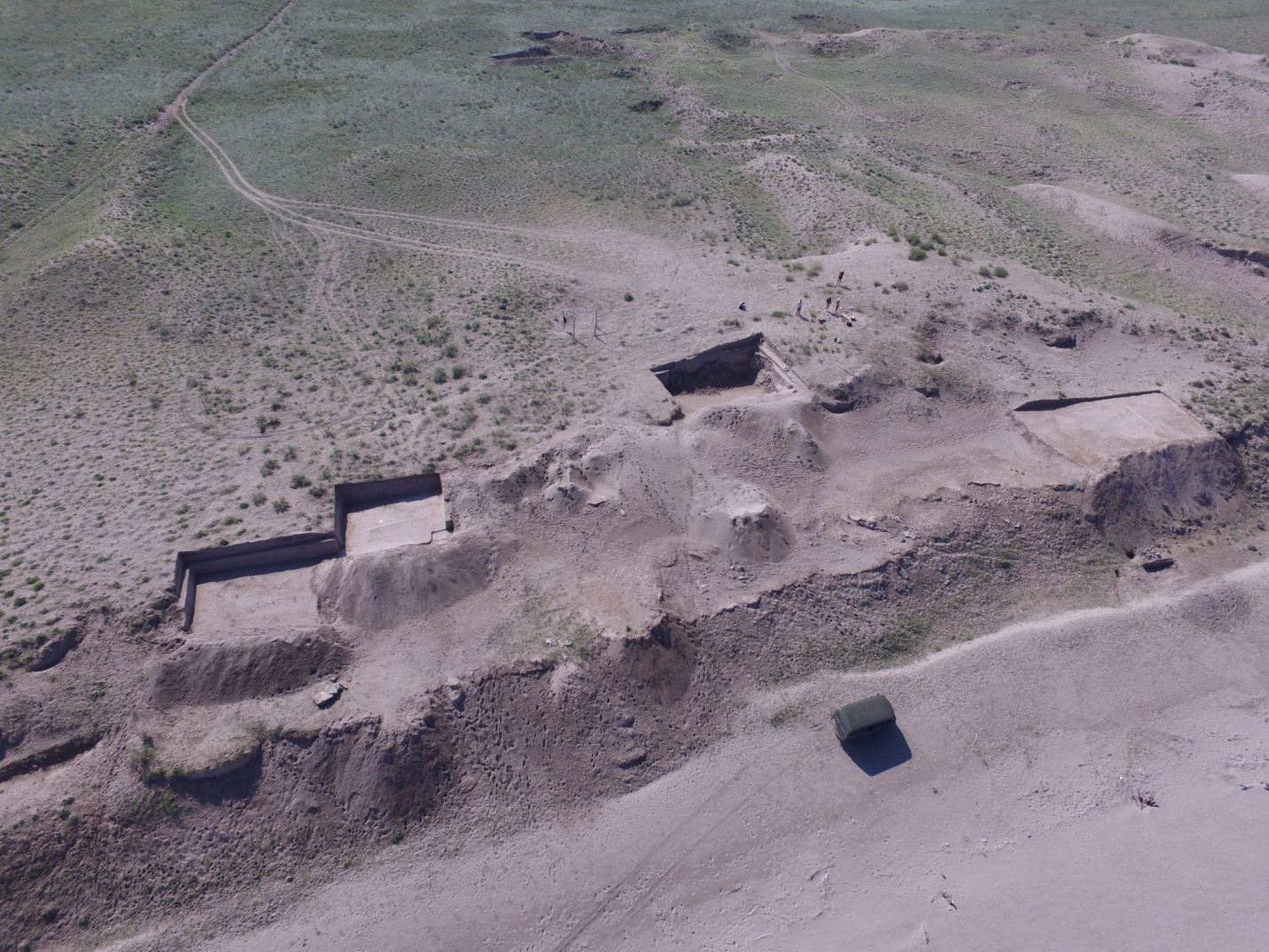
Fig.2
Excavations at Terezin, the four researched areas.
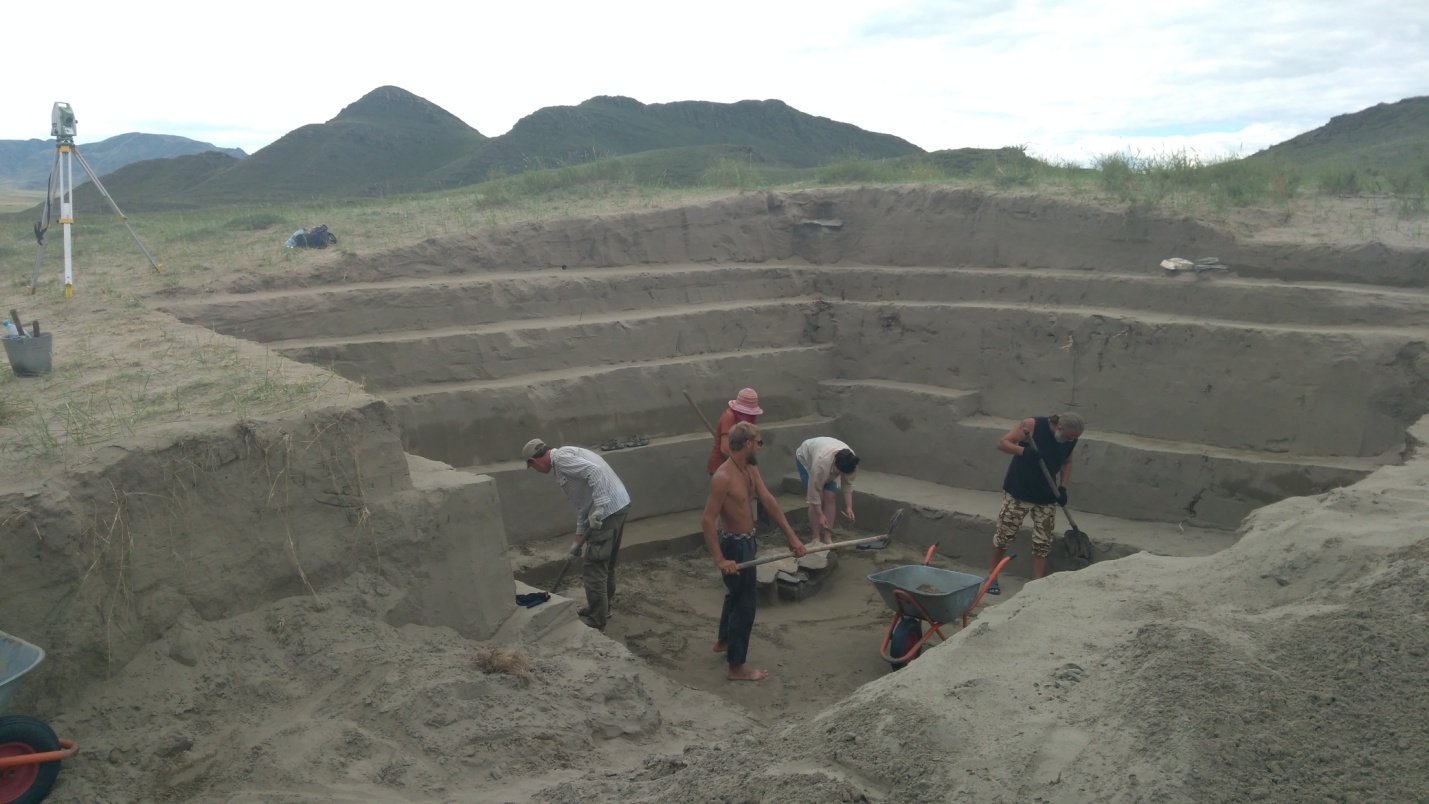
Fig.3
Excavations at Terezin. The child’s burial is four m deep in the
sand.
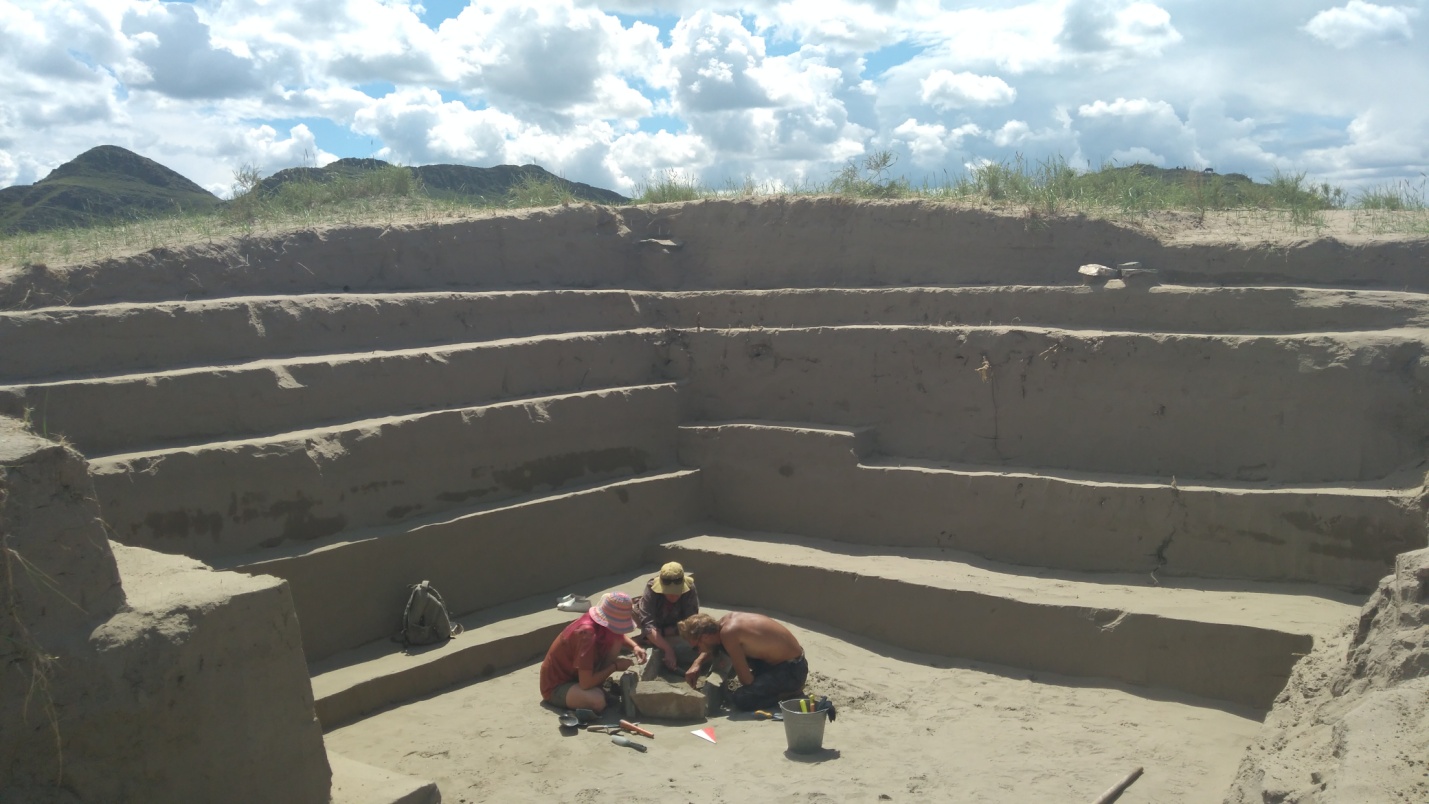
Fig.4
Excavations at Terezin. Child’s burial deep in sand
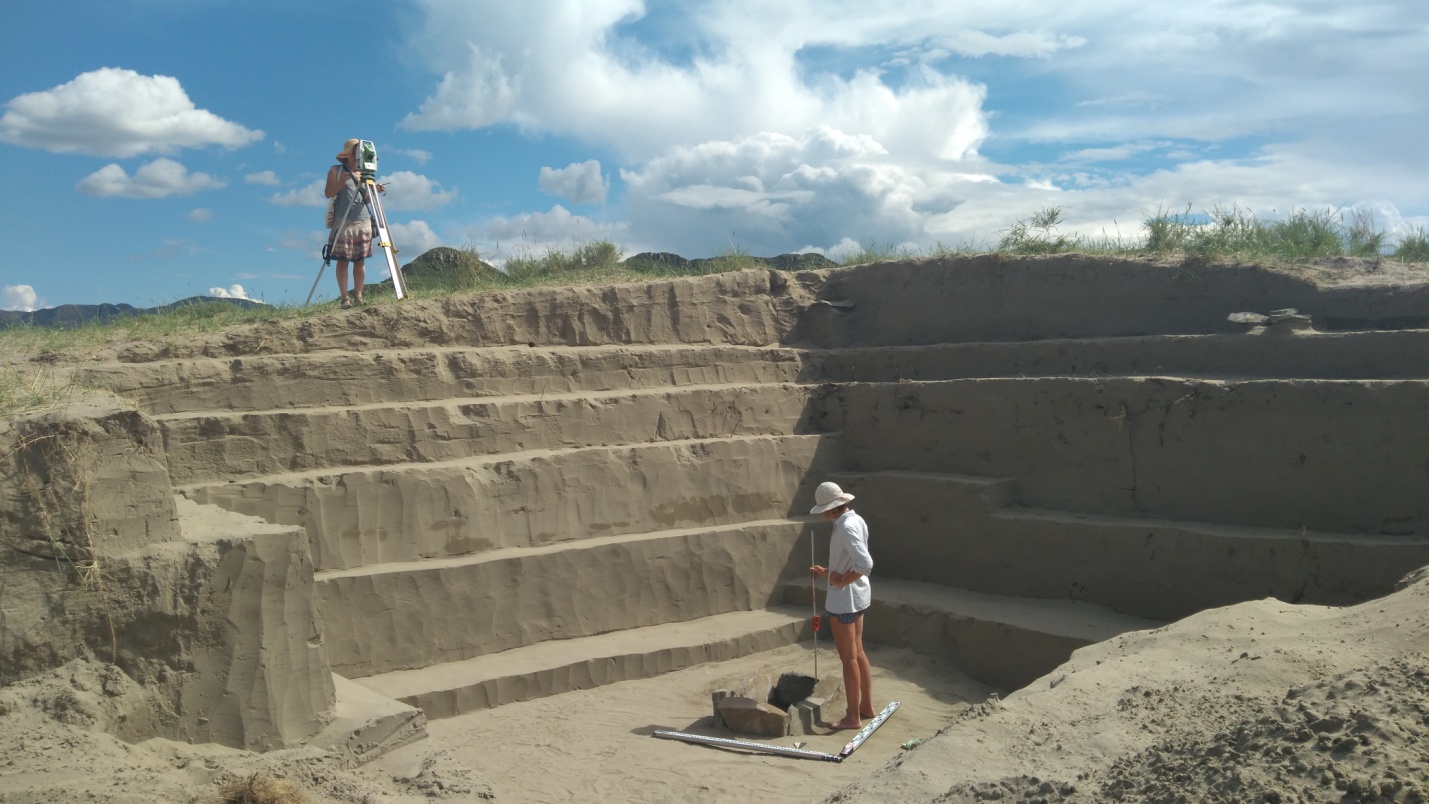
Fig.5
Excavations at Terezin. Child’s burial deep in sand
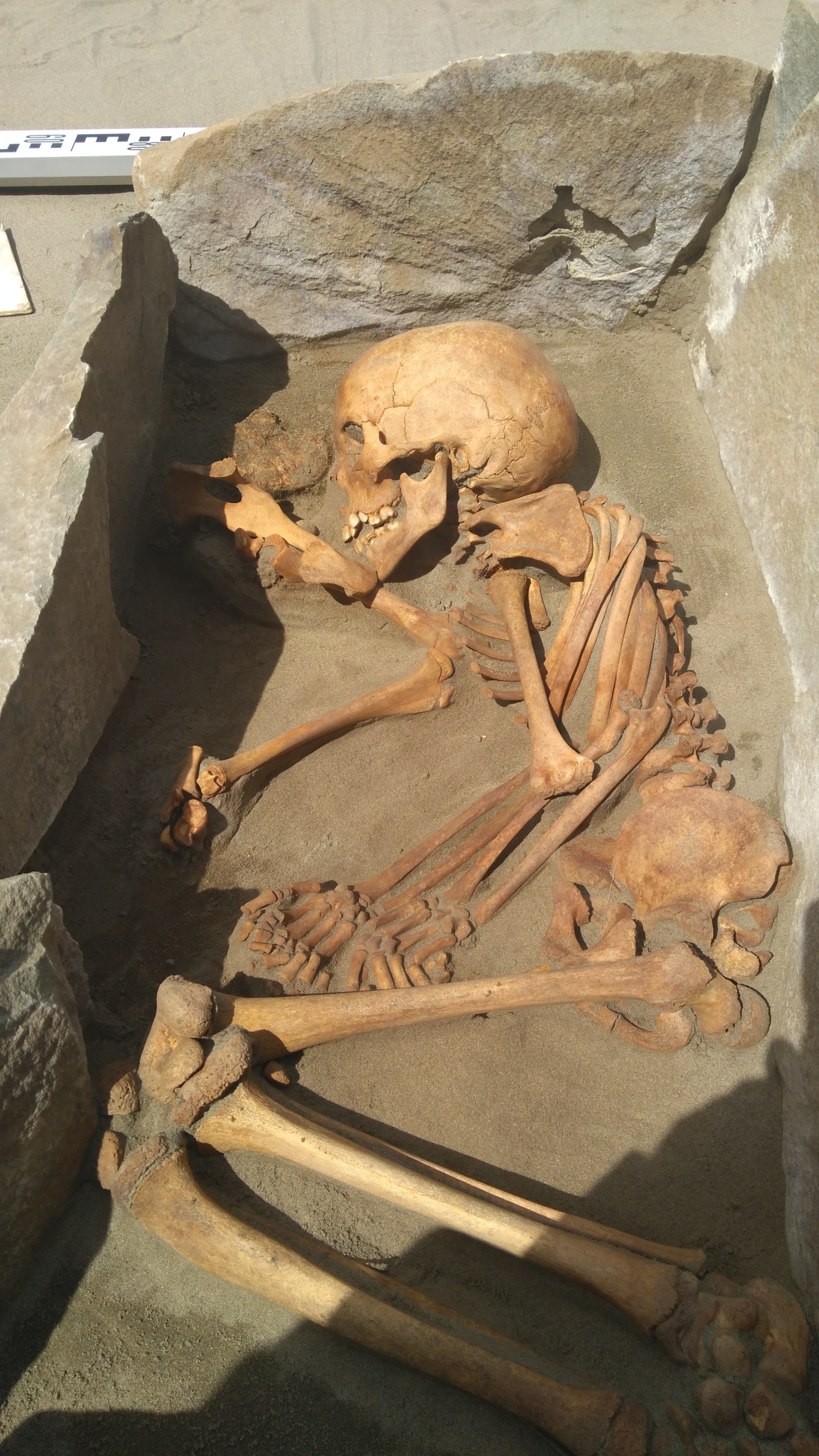
Fig.6
Excavations at Terezin. The child’s burial, grave T/37.
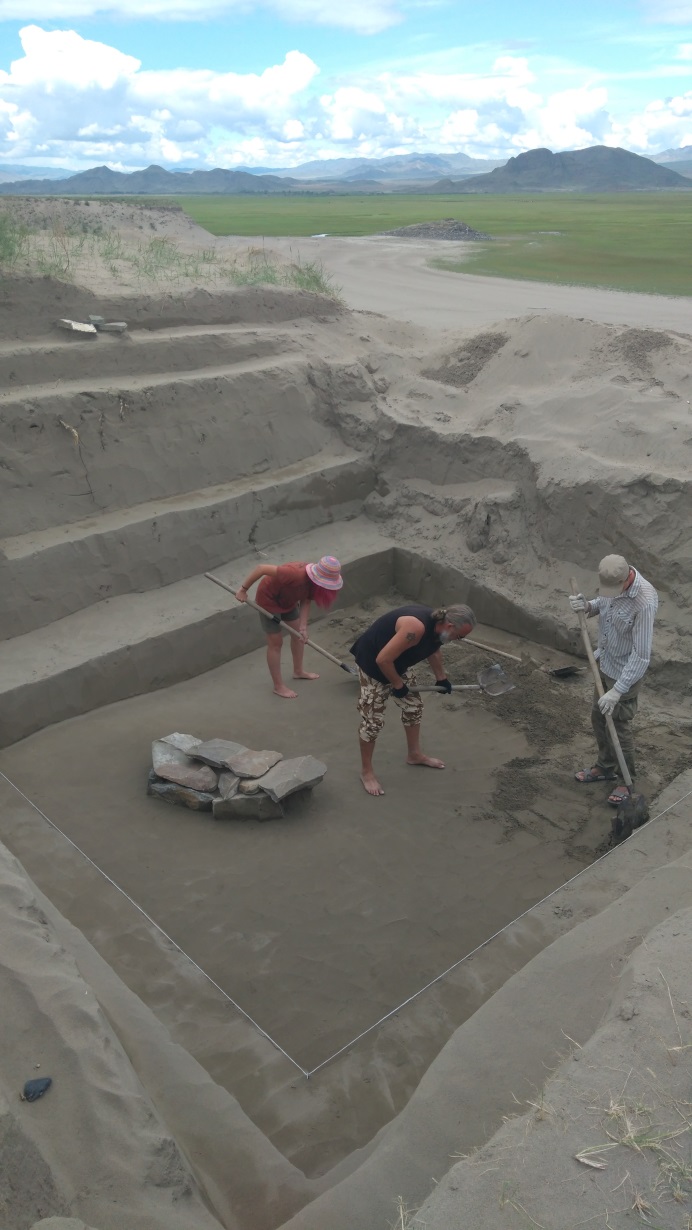
Fig.7
Excavations at Terezin. With the stone cist at bottom left.
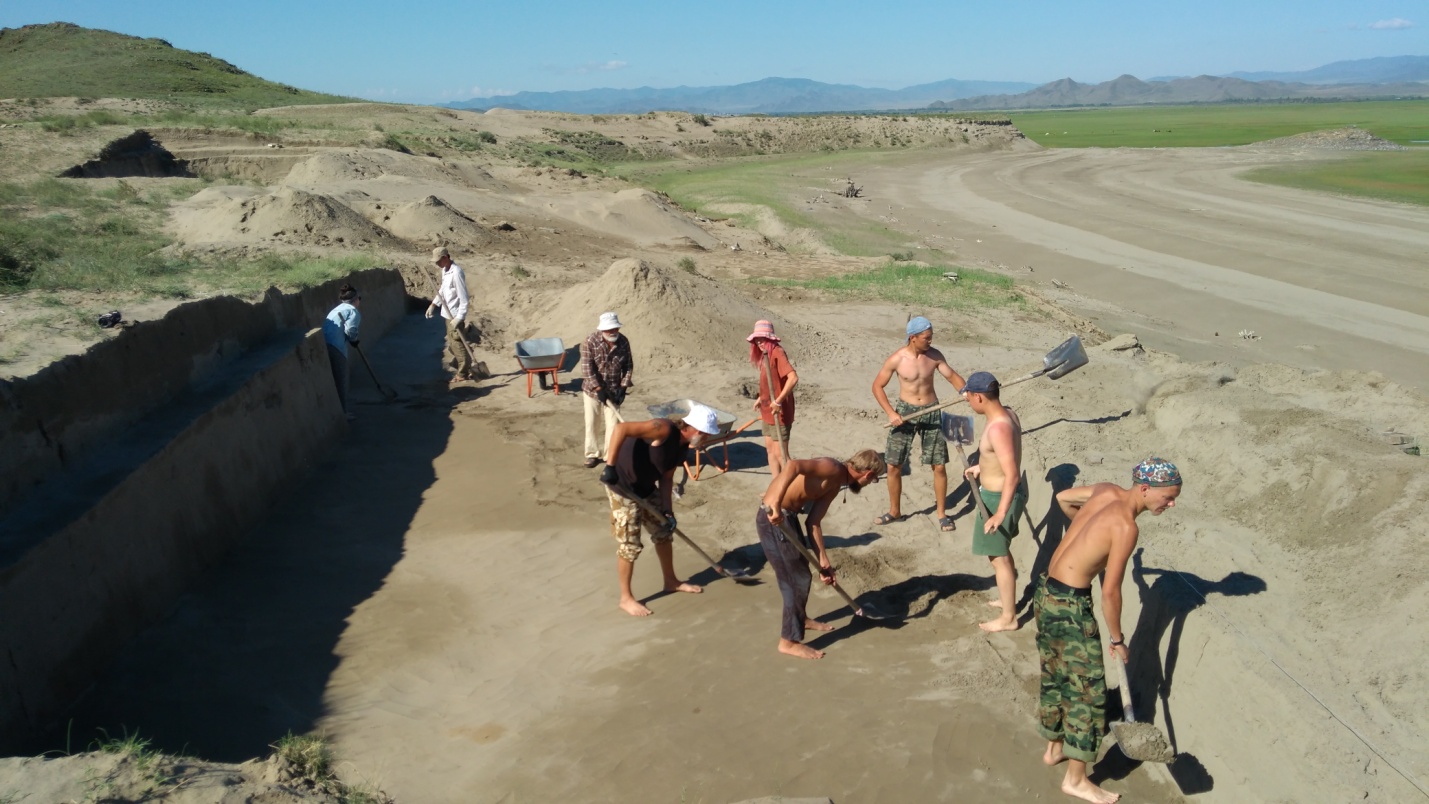
Fig.8
Excavations at Terezin.
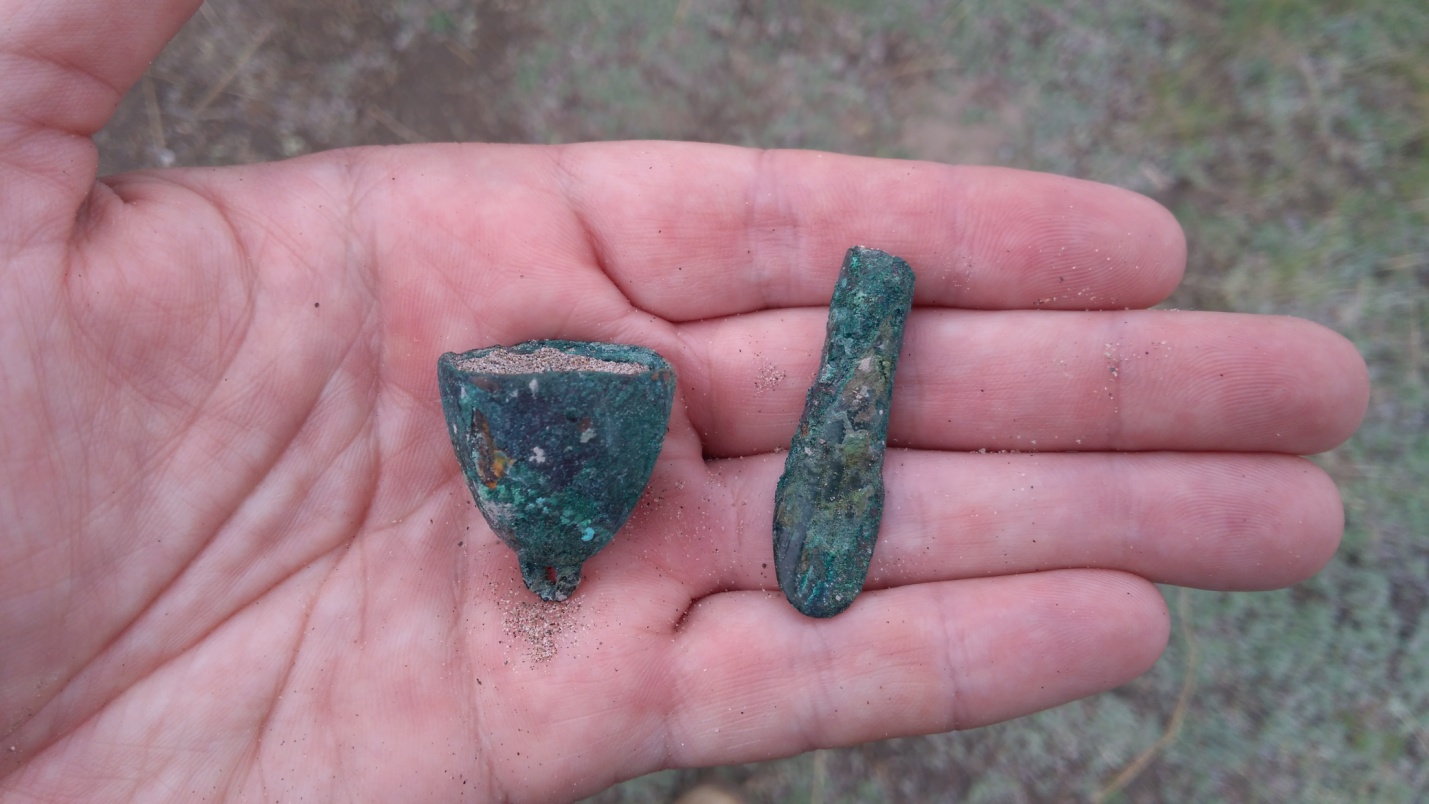
Fig.9
Excavations at Terezin. Chance finds from distroyed Xiongnu burial:
pendants in the shapes of a small bell and of a spoon.
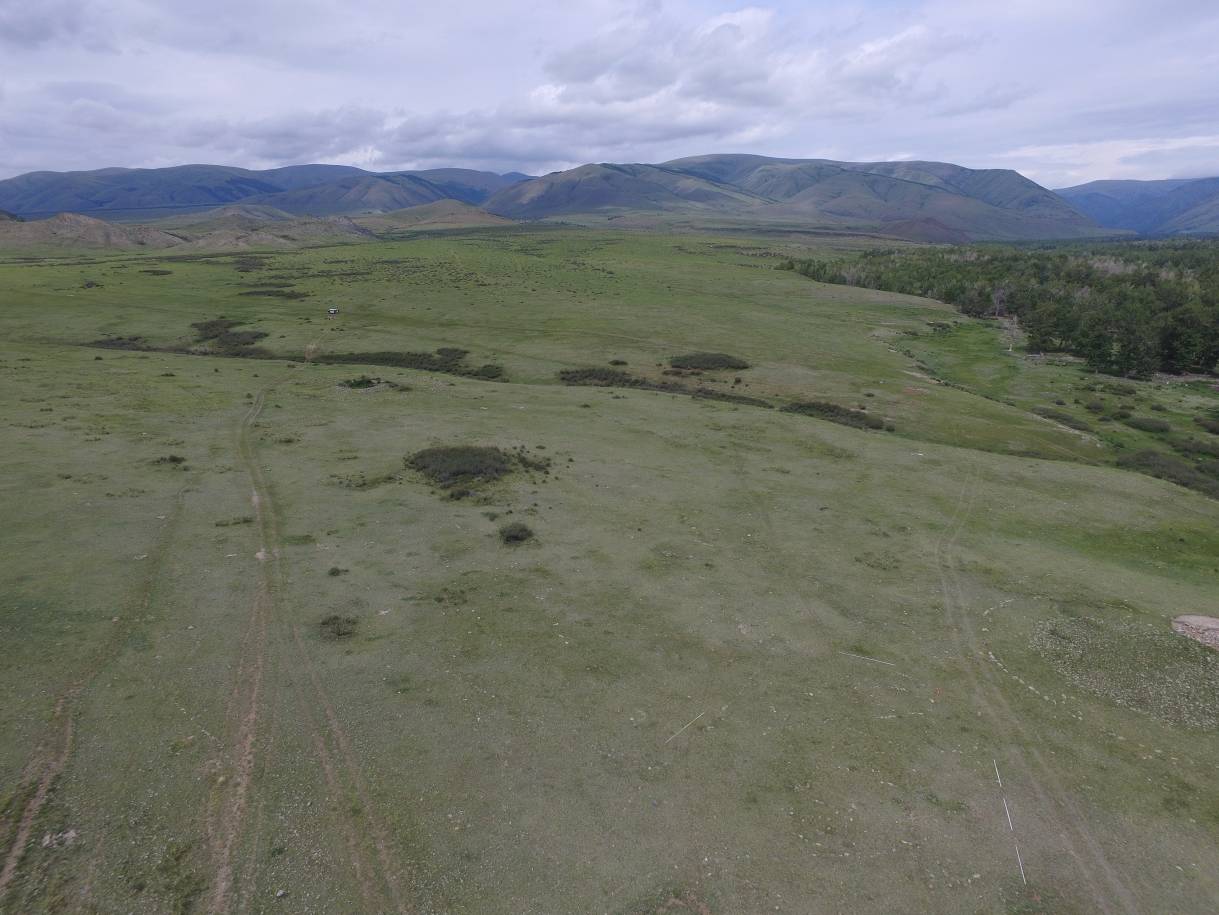
Fig.10
Landscape near the cemetery of Kara-Turug. View
from the south
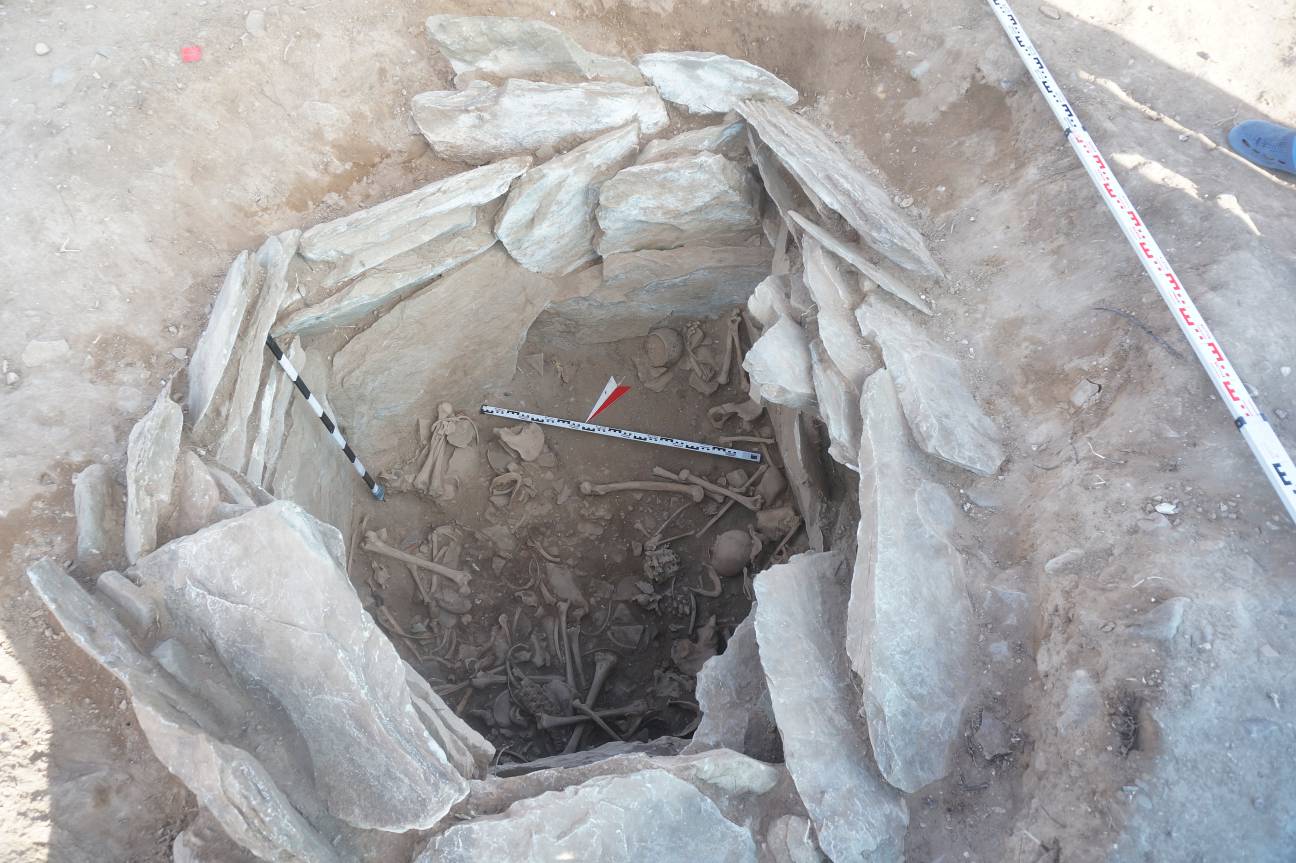
Fig.11
Kara-Turug, Kurgan 1, the Burial
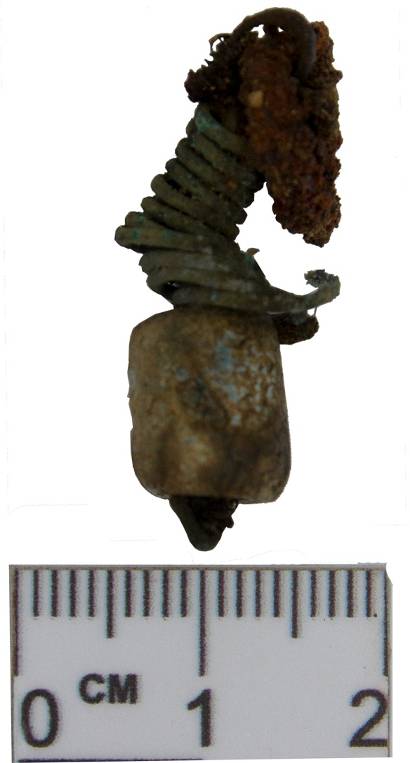 1
1 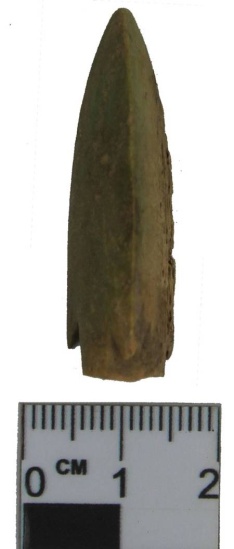 2
2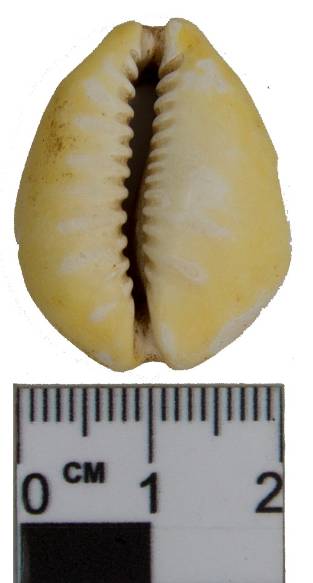 3
3
Fig.12
Finds from Kara-Turug. Earring, arrow head and cowry shell
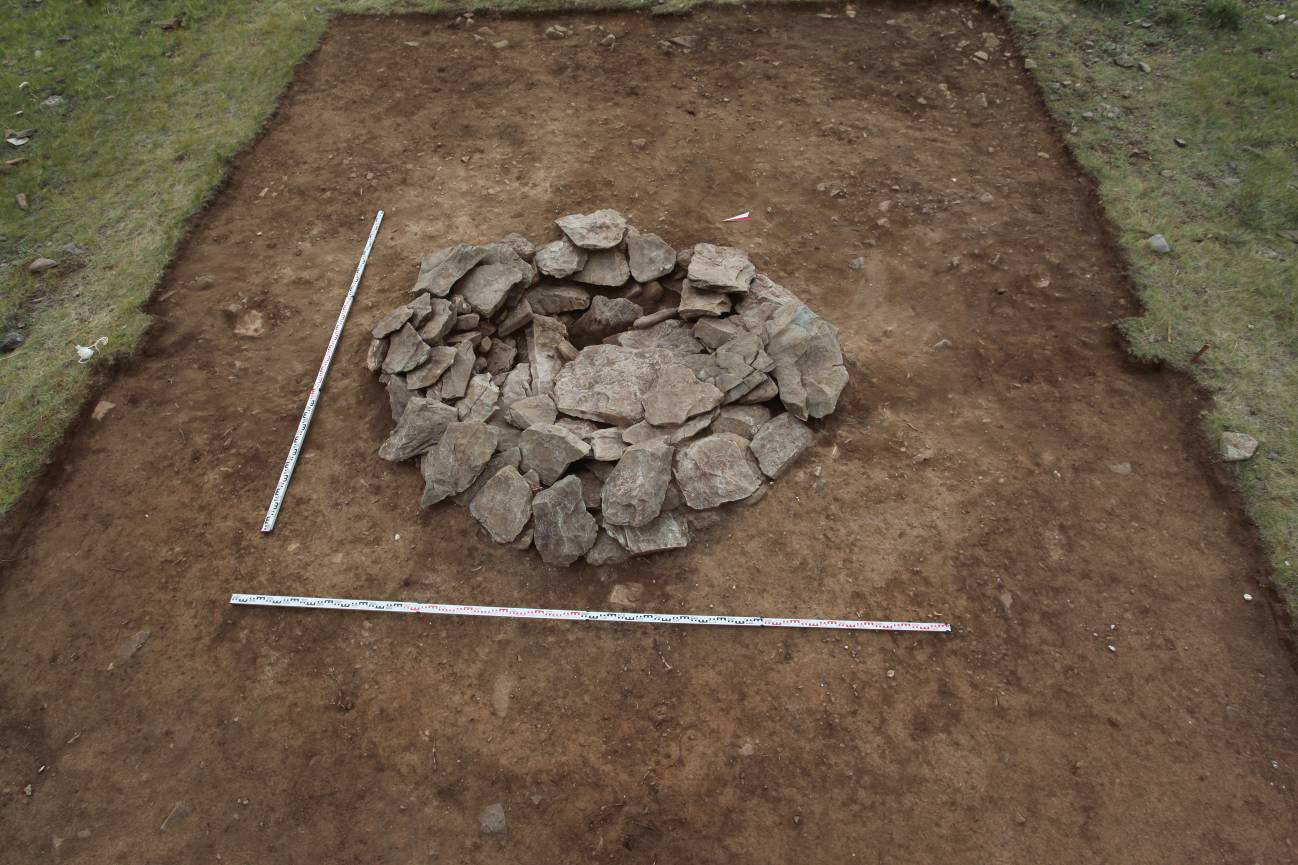
Fig.13
Kara-Turug , Kurgan 3. Stone construction over the burial.
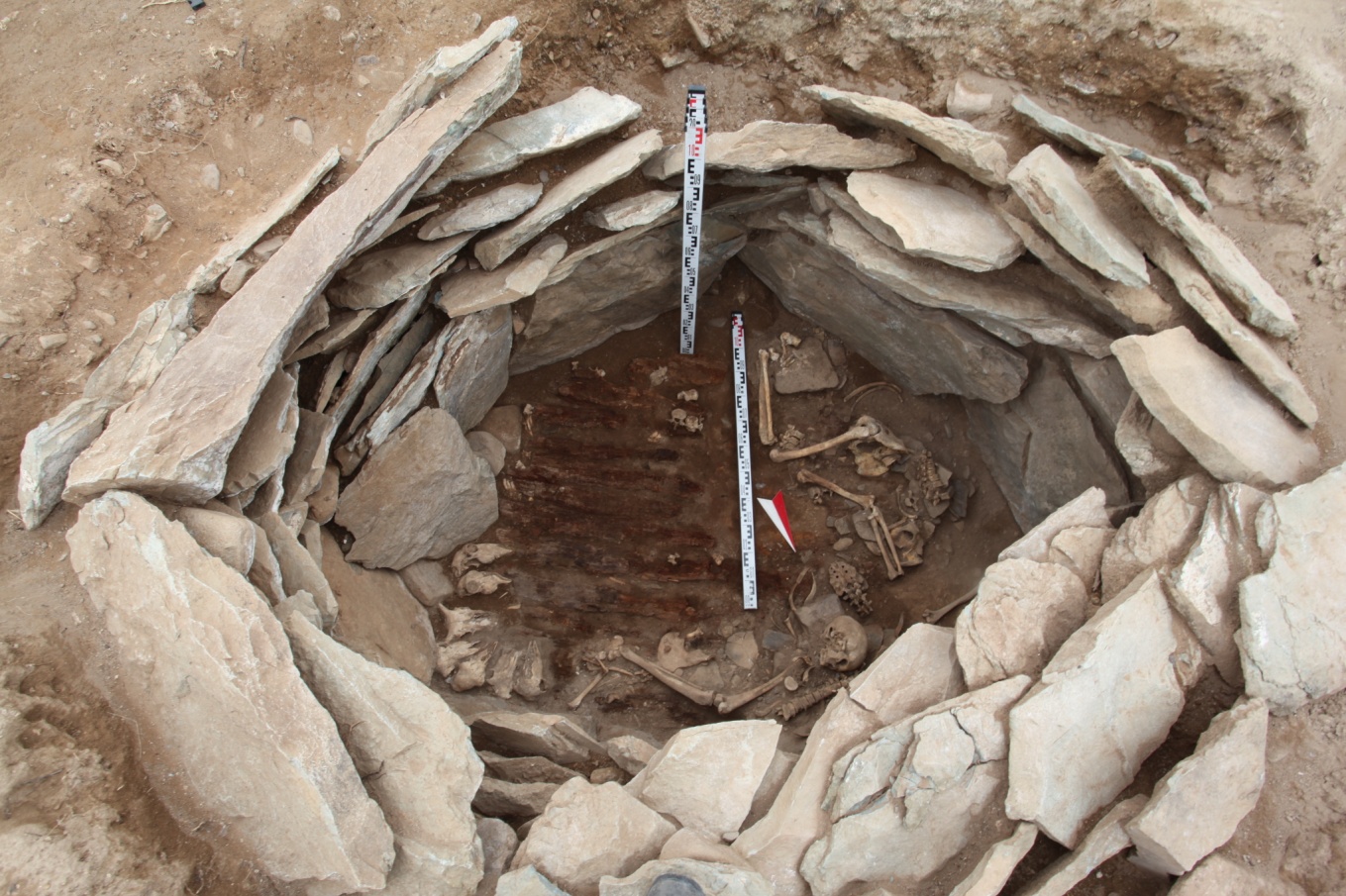
Fig.14
Kara-Turug, Kurgan 3. Burial
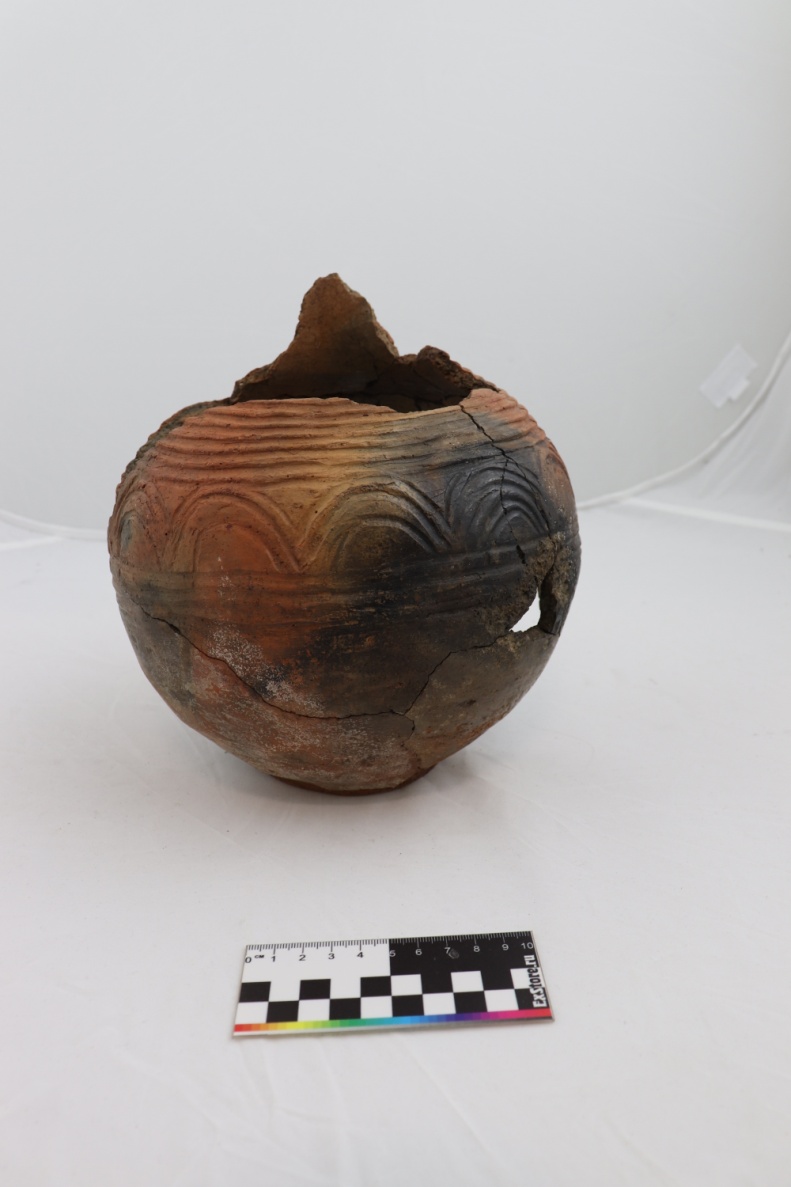
Fig.15
Kara-Turug, Kurgan 3, Ceramic vessel
Archaeological campaign in Tuva, Russian Federation, 2021
Pavel Leus (St.Petersburg/Berlin)
In 2021 the Tuvan Archaeological Expedition of the Institute of the History of Material Culture (St. Petersburg, Russia) continued the excavations at the cemeteries of Ala-Tey and Terezin at the Sayan-Shushenskoe reservoir in Tuva. Both certainly date to the early period of the Xiongnu era, 2-1 century BC.
The excavations of Ala-Tey have taken place in unusual conditions – since the 1980s, the site has lain at the bottom of the Sayan-Shushenskoe reservoir. This means that we can only work here for about 4 weeks each year, from about middle of May, before the reservoir fills up again. There are very unusual weather conditions this May in Tuva and South Siberia - because the long rains the reservoir was filled up too early and already 1st of June the Ala-Tey cemetery was under water. So we can work at the Ala-Tey only 3 full days instead 3-4 weeks. During this short period we have discovered 2 excavations areas and found 3 new grave pits – also the cemetery is still expanding. Above one of the grave pits was found the “classical” for Ala-Tey small vessel with an internal partition with a round hole at its base. Unusual was in this case, this small vessel has a cover from a big part of broken Xiongnu jar.
After this unexpected flooding of Ala-Tey we have moved 4 km to cemetery of Terezin and excavated it during the June.
The Terezin cemetery is located on the sandy much eroded shore of the reservoir. During a few last years It has been possible for our expedition to determinate the structure of the cemetery and also find about 40 of destroyed and intact undisturbed burials of the Xiongnu time with the same artefacts like from the Ala-Tey.
This summer was excavated again on the 4 excavations areas with a depth from about 0,5-4 meters in sand.
During the excavations 4 undisturbed graves was discovered - 2 children’s graves of the Xiongnu period and 2 probably warriors graves of the later Kokel culture (3-4 century AD).
One of the children’s burials was very interesting – in this grave was put the belt of the adult male and 4 bone arrowheads. One of the Kokel burials contains a few gold foil plaques similar to the plaques found recently in Kokel burial at Kurgan Tunnug. More the same plaques were found at Terezin 2015 also in Kokel burial, only few meters apart from the excavating area 2021.
And furthermore, our expedition has discovered more as 200 kurgans of many periods at the reservoir shore between Ala-Tey and Terezin. The most of them are flooded in June-July, some are already destroyed by water.
In coming campaign 2022 the next excavations at Ala-Tey and Terezin are planned, ca. from 20 of May.
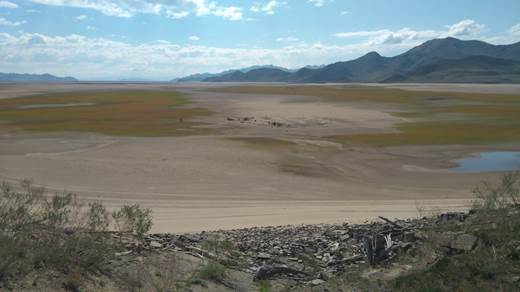
Fig.1 Excavations at Ala-Tey, End of May 2021
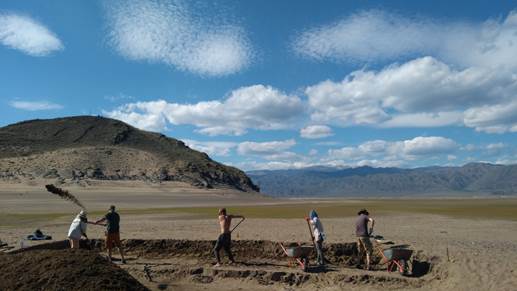
Fig.2 Ala-Tey
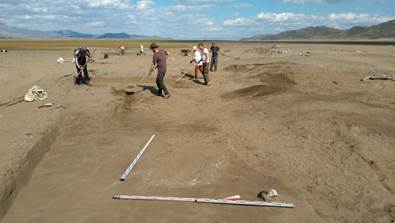
Fig.3 Excavations at Ala-Tey. Discovered Xiongnu grave pit
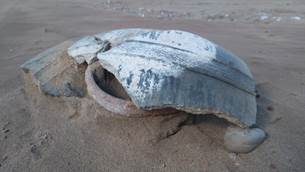
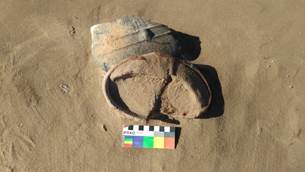
Fig.4-5 Ala-Tey. A small Xiongnu vessel covered with a fragments of jar
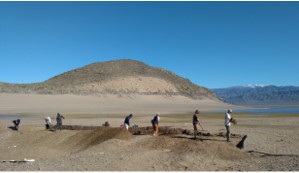
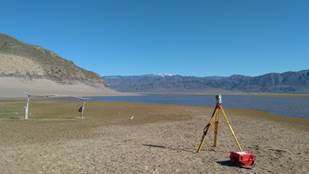
Fig.6-7 Ala-tey, 1st June. Flooding
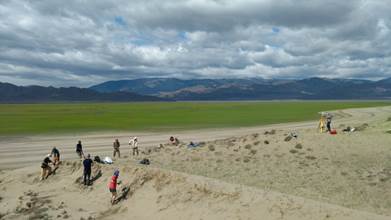
Fig.8 Excavations at Terezin
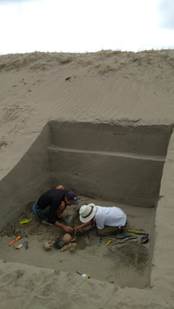
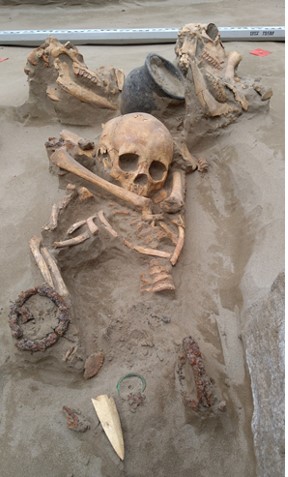
Fig. 9-10. Terezin. A Xiongnu child’s grave
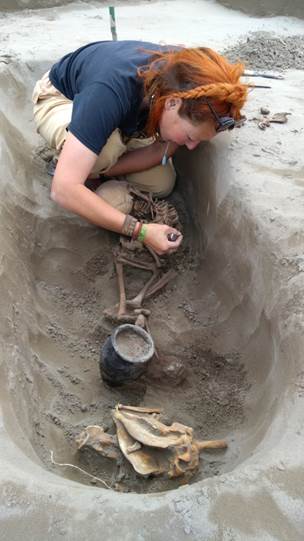
Fig.11 Terezin. Another Xiongnu child’s grave
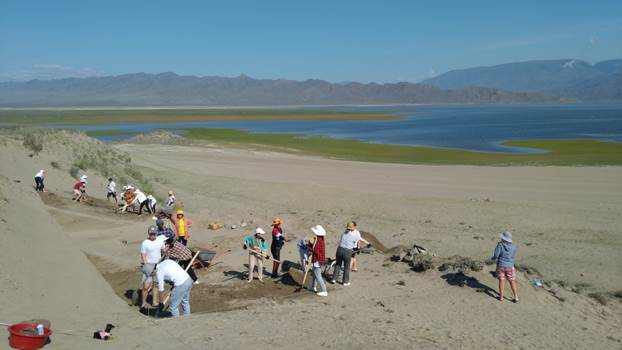
Fig.12 Terezin. Volonteers from the Tuvan University
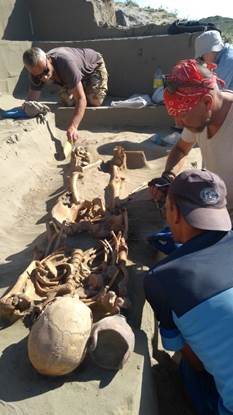
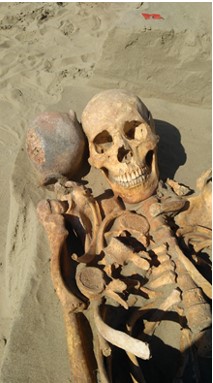
Fig.13-14 Terezin. Kokel culture grave
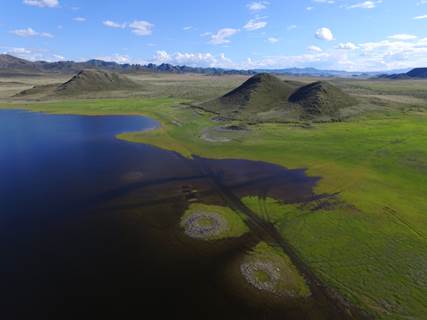
Fig.15. Flooded Kurgans at the reservoir shore between Ala-Tey and Terezin
2023/24
Due to the Russian-Ukrainian War, the excavations have been suspended since 2022.
zurück
| copyright by The Society for the Exploration of EurAsia| E-mail | Home |